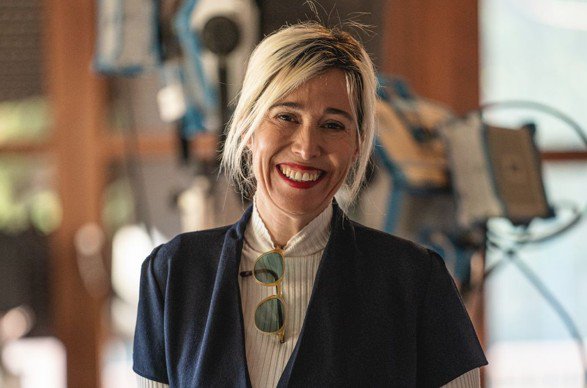The main objective of AECINE, as an association of film producers, is the protection of audiovisual works that are shown first in cinemas. María Luisa Gutiérrez, Chairwoman of AECINE, defines these as works created with the intention of being shown mainly on the big screen, without this being a mere formality to reach other venues.
What initiatives is AECINE promoting in order to strengthen audience attendance in cinemas?
María Luisa Gutiérrez: We are in constant contact with the Institute of Cinematography and Audiovisual Arts (ICAA) and cinemas, in order to promote public policies that bring different age groups to the big screen (discounts for over-60s, discounts for young people, etc.). We try to get cinemas to invest in advertising more films in the trailers they show before screenings. Sometimes it is frustrating to see how we fight for cinemas, yet the commitment to showing trailers at the beginning of films is not always reciprocated.
What are the main challenges you see in the sector?
MLG: Helping the general public understand that cinema is not just culture. It is also an industry that generates much more for the country’s GDP than it receives, as well as creating quality jobs. Another challenge is, of course, getting the public back into cinemas: a place where they can disconnect from the rest of the world (without mobile phones) and enjoy a social experience through which they feel the emotions evoked.
What is the profile of the viewer who attends cinemas located in a shopping centre as opposed to high street venues?
MLG: The audience at city centre cinemas is more adult. They know what they are going to see and at what specific time. Otherwise, they do not go. In the past, cinema audiences at shopping centres went to shop in general and, it is worth repeating, to shop for leisure experiences. That was their plan, and amongst the leisure options was the possibility of seeing a film.
Nowadays, online shopping has caused a dramatic drop in overall consumption and, therefore, in the amount spent on leisure, which, occasionally, included going to the cinema. Of course, cinemas are still operating in the same way, but with fewer visitors. Otherwise, they would have closed. And they are reinventing themselves.
“Sometimes it is frustrating to see how we fight for
cinemas, yet the commitment to showing trailers
at the beginning of films is not always reciprocated”
What trends have you noticed in cinema attendance in recent years?
MLG: We are still not reaching pre-pandemic attendance figures, and we have stalled in our recovery. In fact, in Spain, the recovery is slower than in other countries such as Japan, the United Kingdom, Germany, the United States, China, Australia, France, Italy and Portugal, for example.
How do big productions influence cinema attendance compared to independent films?
MLG: The size of a production has nothing to do with whether a film is labelled as independent or not. At least, it should not have any influence. Every time an independent film achieves a high rating, such as Anora and The Brutalist, it gains significant visibility in the media. These are usually risky, yet necessary stories conveying different points of view. Independent cinema is very enriching for the audience. However, we cannot deny that cinema could not survive without the big commercial productions that make it possible to provide product continuity for our audiences, which are consuming more and more and faster and faster.
“Cinema is not just culture. It is also an industry
that generates much more for the country’s
GDP than it receives”
How important is collaboration between shopping centres and cinemas in revitalising these spaces?
MLG: For us, this collaboration should be vital. Many cinemas are making efforts to turn the cinema back into an experience for the consumer, such as changing the seats to reduce capacity, which makes cinemas more exclusive. This is attractive for both the cinema and the shopping centre. Anything that turns watching a film into a refined experience is positive.
How is technology helping cinemas attract larger audiences?
MLG: Very positively. In fact, cinema investments in ScreenX, IMAX, 4DX and D-BOX technology are working very well. Whether they are being publicised enough is another matter.
How do you see the experiential future of cinema in shopping centres over the next five to ten years?
MLG: We see a very clear evolution of technology to once again make the cinema experience something that we could never have at home.



